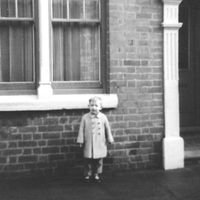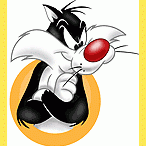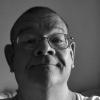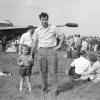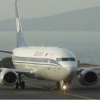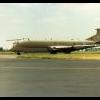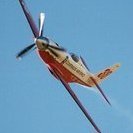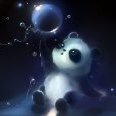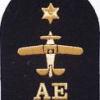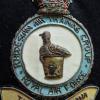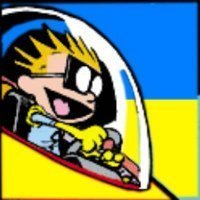Fellow Modelers,
The 1966 American sci-fi adventure film Fantastic Voyage tells the story of a submarine crew who is shrunk to microscopic size and ventures into the body of an injured scientist to repair damage to his brain. The operation must be done in one-hour, as the shrinking process only last that long before an object returns to its original size. The main action of the movie deals with the submarine crew overcoming the challenges of reaching the brain, performing the experimental surgery and being able to leave the body before being destroyed by the body’s natural defenses. Fantastic Voyage is an outstanding movie that is entertaining and impressive even when viewed today. It received five nominations at the 39th Academy Awards mostly in technical departments, winning for Best Visual Effects and Best Art Direction in Color. One of the film’s most enduring stars is the Proteus submarine (a.k.a. U-91035), described as an experimental U.S. Navy vessel designed to research the spawning habits of deep sea marine life. This elegant and believable vehicle was designed by Harper Goff, who also designed the Nautilus submarine for the 1954 Disney movie 20,000 Leagues under the Sea.
For decades many modelers (including myself) have been wishing for an accurate and detailed plastic model kit of the Proteus submarine to be produced. Those wishes were granted in 2016 when Moebius Models released their big 1/32 scale (16” length X 9” width) kit. After sitting on a closet shelf for eight years I have decided it is time to build mine. Welcome to my Progress Build of the Moebius Models Proteus submarine…
Figures 001 through 004: Here are photos of the box art and of a manufacturer build-up from the instruction booklet. As you can see in the photos the kit comes with a complete interior.
Figure 005: Here is the kit decal sheet. Two sets were included with my kit instead of one and I am very grateful for the bonus!
Figure 006: The only aftermarket item I purchased for this kit is the ParaGrafix photo-etched set. That company makes an excellent product and everything I use should enhance the build. According to modeling experts on the internet, this kit has multiple minor inaccuracies (inside and out) but I am fine with not correcting many of those inaccuracies. My main goal is to make the build neat and attractive, like it comes across in the movie.
Figure 007: As always, the first step was cutting, sanding, test fitting and cleaning up each part. This is never a fun process, but it always gets me familiar with the model’s fit up and possible issues down the road.
Figure 008: This photo shows all of the kit parts, except for the interior floor tub and upper/lower hull halves. No modifications have been made yet.
Figure 009: The kit supplied interior is really detailed but once it is sealed up inside the hull halves about 75% of it will not be seen. However, I want the best of both worlds-a completely viewable interior and a completely assembled exterior. To get this I decided to build the interior and exterior as two separate models, and when finished they will sit side-by-side in a display case arranged very much like seen in this photo. Therefore, this Progress Build will be divided into two sections consisting of PART 1-Interior and PART 2-Exterior.
Figures 010 through 012 (PART 1-INTERIOR): Since all areas of the interior floor tub, walls and furniture will be visible, extra sanding was required to remove rough spots, injection pin marks, molding flaws and raised copyright wording that would be hidden in a standard build. These photos show the interior floor tub after the cleaning was complete.
Figure 013: The pilot’s seat support part was modified by removing the plastic foot rests to be replaced with photo-etched foot rests later.
Figures 014-015: These before and after photos show the removal of a control box and conduit piping from one of the walls. They were removed to make painting the parts easier and will be replaced later.
Figure 016: The conduit piping from this wall has been sanded away as well, but holes have been drilled to mark their original location.
Figure 017: A thin piece of Evergreen styrene was used to fill in the open backside of the wireless radio.
Figures 018-019: The chart case front part used dimpling to represent open holes. It did not look very convincing so I very carefully opened them by drilling. This modification made a tremendous improvement in how the part looks.
Figure 020: The chart case side part details were sanded away and replaced by a photo-etched part. The ParaGrafix photo-etched control panel parts were only used where the kit’s raised details were poorly molded.
Figure 021: The assembled chart case is shown.
Figure 022: The assembled chart table is shown with one photo-etched piece added.
Figure 023: The laboratory sink base was improved by adding photo-etched doors and a scratch-built faucet. Tiny Evergreen styrene hot and cold water valves will be added later. In the movie there was actually two sink basins but I was content to live with one.
Figures 024-025: The laboratory cabinet was the next part to be modified. On the front side, photo-etched doors were added and the molded-on dispenser knobs were cut off and holes drilled in their place. Small pieces of Evergreen round styrene will be added later where the molded-on knobs were. On the backside, various Evergreen pieces of thin sheet and 1/4” blocks were used to fill on the hollow areas and improve the overall appearance.
Figures 026-027: The laboratory cabinet is shown being test fitted to the interior floor tub.
Until next time…
Phillip1


